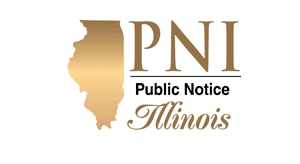Latest
-
 Gaines and Hall Combine for 54, Windy City Bests Rip City February 6, 2025
Gaines and Hall Combine for 54, Windy City Bests Rip City February 6, 2025 -

-

-
 Winning Lucky Day Lotto Ticket Sold at Newsstand in Chicago’s Loop February 6, 2025
Winning Lucky Day Lotto Ticket Sold at Newsstand in Chicago’s Loop February 6, 2025 -
 Frida…A Self Portrait February 6, 2025
Frida…A Self Portrait February 6, 2025
Popular
Tags
Artistas Adolescentes Aprenden el Valor de un Arduo Trabajo
Artists Nationwide
Brazilian Students Tour Kirie Water Reclamation Plant
Challenges of Returning to School in Adulthood
Chicago
Chicago Air and Water Show
Chicago CPS
Chicago Dream Act
Comparta su Historia
CPS
Cultura Latina
Delicious Salad Meals
Dream Act
Dream Act chicago
Dream Relief
Dream Relief Chicago
El Alma de la Fiesta
Ending Summer on the Right Foot
Ensaladas sencillas y deliciosas como plato principal
Estudiantes Brasileños Recorren la Planta de Reclamación de Agua Kirie
Feria de Regreso a la Escuela de la Rep. Berrios
Festival Unísono en Pilsen
Grant Park Spirit of Music Garden
ICIRR
ICIRR Receives Criticism Over Dream Relief Day
ICIRR Recibe Críticas
Jose Cuervo Tradicional
José Cuervo
José Cuervo Tradicional Celebra la Cultura Latina e Inspira Artistas a Nivel Nacional
Latin Culture
Los Retos de Volver a la Escuela Cuando Adultos
Meijer Abre sus Puertas en el Distrito de Berwyn
Meijer Opens in Berwyn District
orth side Summer Fest on Lincoln Ave
PepsiCo Foundation Apoya Futuros Periodistas Hispanos
PepsiCo Foundation Supports Future Hispanic Journalists
Share Your Story
Show Acuático y Aéreo
Simple
StoryCorps
storycorps.org
Teen Artists Learn the Value of Hard Work
Terminando el Verano con el Pie Derecho
Unisono Festival in Pilsen
‘El Chente’




City of the Ancients Under A Modern City?
By: Daniel Nardini
There are of course many unanswered questions. Why did the Spanish choose the site that became the modern day Santiago? What advantage did the site have for the Spanish to choose the area rather than somewhere else? According to old records, the Spanish founded Santiago because it was defensible, it had a mild climate, and abundant vegetation. Of course, one has to ask if the native peoples, especially the Incans, also founded a city on this site as well. Besides old maps and personal testimonies, some archeological evidence of homes, artificial canals and ditches as well as religious centers not far from Santiago have been found and suggests that there is a possibility that an ancient city might have existed where Santiago is now. Of course, this does not suggest that an Incan did exist where Santiago is now, but it lends strong credible evidence that there might have been an Incan metropolis, and the Spanish simply may have founded Santiago at or near it.
We have evidence of the Spanish establishing capital cities in places that were once the major cities or towns of native peoples’ center(s) for their civilizations. One classic example is Mexico City (Tenochtitlan). Another example is St. Augustine in Florida. St. Augustine was founded on what used to be a Native American village. For the Spanish, it made perfect sense to found a major settlement on or near a native people village or city. Many native American sites were themselves founded in places where there was fertile soil, good climate, abundant river streams, and were defensible. So it would make sense that the Spanish could have founded Santiago on a site of a former Incan urban center. We just cannot confirm or deny this possibility. Only further research and archeological work will verify this.